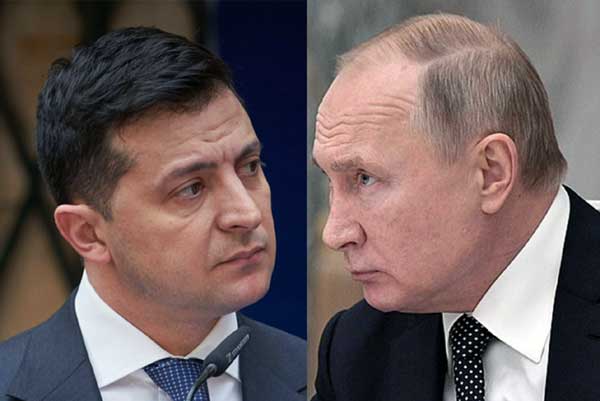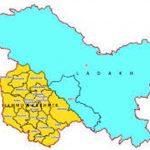IDR Blog
What Forced a Russian response in Ukraine
While the Russian special operation is going on in Ukraine, many are wondering what is the reason for launching it. One of the reasons, which is labeled by the West as Putin’s rhetoric, is the Ukrainian fascist forces.
Since the Western-backed coup in Kiev in 2014, political organisations associated with neo-Nazis infiltrated Ukrainian mainstream politics as the Ukrainian government sent troops to try to crush the Donbas uprisings by force.
As Ukraine waged war against breakaway forces in the Donetsk and Lugansk People’s Republics, the Neo-Nazi Groups in Ukraine gained notoriety for their belligerent rhetoric towards the population of the country’s east, as well as for eagerly participating in the civil war.
The Azov Battalion was originally a volunteer militia formed in May 2014 shortly after the coup in Kiev.
The unit’s first commander was right-wing nationalist Andriy Biletsky, who led the paramilitary national socialist group called “Patriots of Ukraine” and was the founder of a neo-Nazi group, the Social-National Assembly (SNA) in 2008.
In 2010, Biletsky, a former parliamentarian, apparently said that Ukraine was meant to “lead the white races of the world in a final crusade … against Semite-led ‘Untermenschen’ (sub-humans)”as per reports in a number of Western mainstream outlets.
Azov readily entered the fray as nationalists and neo-Nazis began illegally seizing power across Ukraine, clashing with opposing forces of the so-called “anti-Maidan” movement.
Events in Odessa on 2 May 2014 became one of the definitive moments of that period, as street fighting between neo-Nazis and anti-Maidan protesters prompted the latter to barricade themselves in a local trade unions house.
With backing from the new Ukrainian authorities, the encircled building was set ablaze with petrol bombs. Almost 50 people were killed, either burned alive or while jumping to their deaths from windows to escape the flames. Some 250 other protesters were injured in the horrific events.
Azov took part in subsequent hostilities in Donbas and was incorporated into the National Guard of Ukraine in November 2014, although its members continued to wear neo-Nazi and SS-like symbols and regalia and openly express neo-Nazi views.
Their logo echoes the Wolfsangel, one of the original symbols used by the 2nd SS Panzer Division ‘Das Reich’. Representatives of the Azov Battalion, however, have claimed their symbol is an abbreviation for the slogan “National Idea” in Ukrainian.
Ukrainian authorities did not bother to conceal the fact that in 2014, Azov Battalion comprised neo-Nazi-leaning volunteers from countries such as Sweden, Italy, France, Belarus, Canada, and Slovenia.
Despite the adoption of the 2015 Minsk Accords that were aimed at ending the civil war by reintegrating the Donbas into Ukraine in exchange for constitutionally-guaranteed autonomy, Kiev refused to implement a peace deal. Azov Battalion members took an active part in Donbas hostilities.
In 2016, the Office of the UN High Commissioner for Human Rights (OHCHR) accused the Azov Battalion, officially upgraded to a regiment in January 2015, of committing war crimes such as mass looting, unlawful detention, and torture. Currently, the Azov “Special Operations Detachment” is engaged in the Ukrainian army’s counter-reconnaissance and special weapons operations.
The Russian Investigative Committee has opened a criminal case against a number of fighters from Azov units for crimes such as kidnapping, torture, use of prohibited means and methods of warfare.
Another infamous group is the Right Sector*, originally set up as an alliance between Ukraine’s nationalist groups in November 2013. It subsequently announced that they had formed a special “Donbas” battalion for its paramilitary operations in the breakaway region.
Ex-Right Sector leader Dmytro Yarosh described himself as a follower of the notorious Nazi collaborator Stepan Bandera. The group has vehemently advocated a forceful settlement of the Donbas crisis, rejecting a negotiated approach. It took a similar stance regarding Crimea, which became part of Russia in a referendum held in March 2014 in which nearly 96 percent of Crimean’s voted to re-join the country. Moscow has repeatedly stated that the decision made by the Crimean people was conducted in full compliance with international law and the UN Charter. What is conveniently forgotten is the illegal bombing of Serbia by, NATO and the occupation of the southern Serbian province of Kosovo. Even today, 23 years after the NATO aggression on Serbia, the Serbian army and police cannot return to Kosovo, even if, according to UN Resolution 1244 (which Washington also voted for), Serbia has the right to return its state institutions to Kosovo.
The Russian population in Ukraine suffered unprecedented terror. Ukrainian fascists even went so far as to burn living Russians on crosses.(1)
According to the latest information, a total of 10,000 people were killed during the civil war in Donbas, although some estimates go up to 14,000 killed. Of that number, 149 Russian children from Donbas were killed, while over eight hundred children were wounded or underwent some other form of torture.(2)
A few days ago, the Russian army brought the captured Ukrainian soldiers in front of the monument of the innocently Russian children killed by their forces, so that the Ukrainian soldiers can see what their army has been doing for 8 years.(3)
Russia has been warning Kiev for 8 years that it must stop killing Russian civilians and especially Russian children in Donbas. And that basic human rights of Russians in Ukraine must be respected. However, no one in Kiev wanted to hear it.
Did anyone think that Russia’s patience was boundless? Did anyone think that Russia would watch indefinitely peacefully as innocent Russians were burned alive on crosses, in the 21st century, in Europe? And while innocent Russian children are being killed, just because they are Russian children?
Well, you are looking at the answer to that question now! And let it be clear to everyone, the Russian peacekeeping operation which is currently underway in Ukraine will make sure that Russian children in Ukraine are never again killed, just because they are Russian children!
Notes:
(2) https://istinapravda1000.blogspot.com/2022/02/jecaj-majki-cuo-se-do-neba-ovo-su-deca.html
Post your Comment
One thought on “What Forced a Russian response in Ukraine”
 Loading Comments
Loading Comments





Sir,
My take ??
Russia had very well understood beforehand that West doesn’t have the “will” to fight one to one with Russia.
It adopted a threatening posture in December to warn West of its intolerance of Ukraine becoming a NATO member.
But West , namely Anglo Saxons responded with cunningness by providing A/ tk and A/ Pers weapons to Ukraine, thinking possibly that heavy losses may deter Russia.
This emboldened the Ukrainians.
A few losses for Russia would be taken in their stride to ensure a NATO free Ukraine, was what West couldn’t comprehend.
Russia, even now has been rather civilised and hasn’t moved Armd colns sweeping across Ukrainian Steppe’s which then would tender farming a bit difficult next season. Also it has not used Air Force or Drones.
Russia understands that Ukraine is a neighbor which has turned rogue due to the Anglo Saxons in NATO. It wants to avoid creating too much damage and casualties as later it will have to rebuild and also earn lasting hatred of Ukrainians.
Keeping Ukrainians free to flee by rail and road and keeping border posts to Europe free from war , it has created a lasting problem for NATO.
It’s slow pace of ops is to allow civilians to flee and to ensure capture of territory in a deliberate manner, without much collateral damage.
It’s slow pace is also to test the patience of NATO and to rub it into the Anglo Saxons that they are toothless to physically intervene, even if this deliberate pace takes war to three months, as unchallenged, Russia has time on its side .
Sophisticated weapons may minimise casualties and up the ante but then War too would finish early which may stem civilians fleeing Ukraine and also let off NATO from its growing dilemma of whether or not to intervene if the conflict prolongs and of its daily feeling of helplessness against Russian arrogance.
This War has proven the NATO is a relic of Cold War and it’s existence today is detrimental to global peace .